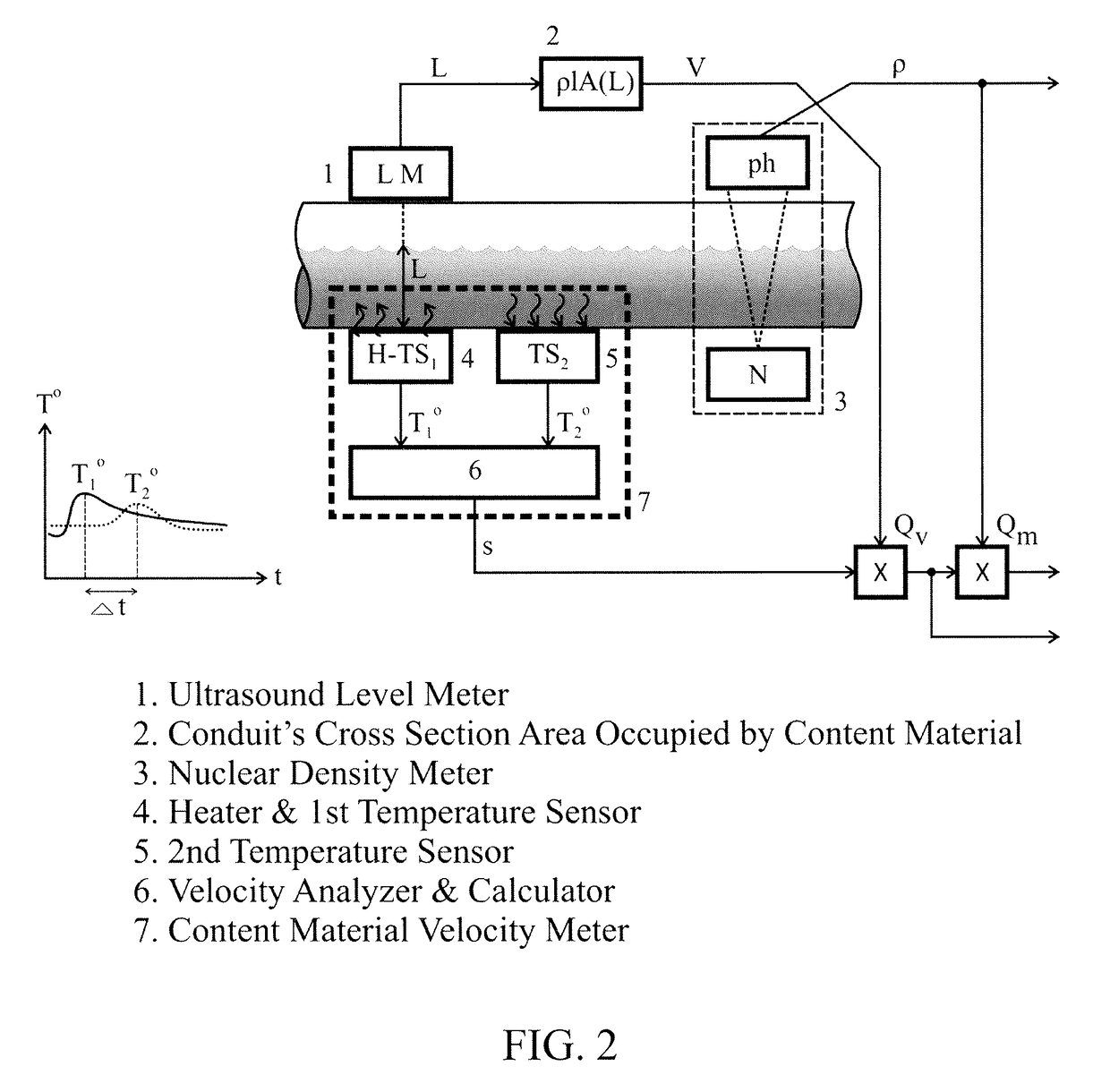Method and apparatus for non-invasively measuring physical properties of materials in a conduit
a technology of physical properties and conduits, applied in specific gravity measurement, instruments, borehole/well accessories, etc., can solve the problems of burdensome acquiring a license for the use of portable radiation-based density measurement devices, inapplicability of radiation-based methods,
- Summary
- Abstract
- Description
- Claims
- Application Information
AI Technical Summary
Benefits of technology
Problems solved by technology
Method used
Image
Examples
Embodiment Construction
[0031]In many industrial processes there exists a need to non-invasively and continuously monitor one or more physical properties of a material flowing through a conduit. Continuous measurement may be desirable for processes that run on a round-the-clock schedule. Invasive techniques may require shutting down the process, which interrupts the production cycle. Current measurement methods, such as those described above, may use one or more separate devices to obtain each different type of measurement. There exists a need for a device that can consolidate one or more of these measurements into a minimum number of devices.
[0032]Aspects and examples disclosed herein are directed toward simultaneous non-invasive measurement of one or more physical properties of a material flowing through a conduit. Certain examples utilize a percussion-based method for measuring certain physical properties. The percussion-based method may be used with one or more other types of techniques, such as ultras...
PUM
| Property | Measurement | Unit |
|---|---|---|
| density | aaaaa | aaaaa |
| temperatures | aaaaa | aaaaa |
| temperatures | aaaaa | aaaaa |
Abstract
Description
Claims
Application Information
 Login to View More
Login to View More - R&D
- Intellectual Property
- Life Sciences
- Materials
- Tech Scout
- Unparalleled Data Quality
- Higher Quality Content
- 60% Fewer Hallucinations
Browse by: Latest US Patents, China's latest patents, Technical Efficacy Thesaurus, Application Domain, Technology Topic, Popular Technical Reports.
© 2025 PatSnap. All rights reserved.Legal|Privacy policy|Modern Slavery Act Transparency Statement|Sitemap|About US| Contact US: help@patsnap.com



